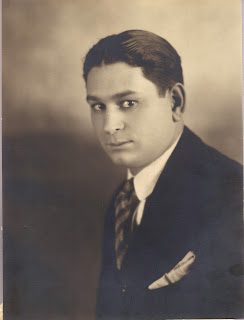When I was in first grade
Miss Charlton (whom we called Charlie because of her mustache) marched us into
the auditorium to learn “My Country ‘Tis of Thee.” She sat down at the piano
and led us through the song word by word, playing the piano with one hand and
directing us with the other. When we came to the phrase “Land where my father
died,” I couldn't figure out how they all knew.
At home my father’s death was this big secret. There wasn't even a photograph
of him anywhere, as if a picture could suddenly whisper the truth. Since all
the other kids had fathers I reasoned it must be my father who died on the land
they were singing about.
He vanished
without a trace of the ordinary clutter and details of a life, leaving not a
shadow nor footprint. There were no letters or insurance papers or tax receipts
to find. Not a watch or drivers’ license or birth certificate or deed to a
house. No marriage license or diploma. No fading photograph that he had
carried, maybe of me. Not a wedding portrait or snapshot at the beach. It was
as if during the 29 years of his life on earth he was already a ghost.
I was two years
old when my bootlegging father-- and innocent uncle who just happened to be in
the wrong place at the wrong time-- were murdered, and don’t remember him. But
my older brother, Kenny, told me of his charm, violent temper and
generosity. I found two pictures of him
among my mother’s possessions after she died. In one, my father is a dark-eyed child on a
tricycle. The other shows a muscular youth standing with his brother, Marvin,
in front of a horse and delivery wagon from the family bakery. The picture is
slightly out of focus, his grin blurred, but you can see his physical strength
and his readiness to use it. In the other he stands serenely in a handsome tan
suit looking for all the world like a gentleman of banking or the law. His lips
are thick and sensual, his brown eyes deep set. He is a beautiful young man
frozen in his youth by death, silence and myth. He is a stranger and a daddy
who didn't love us enough to stay alive.




